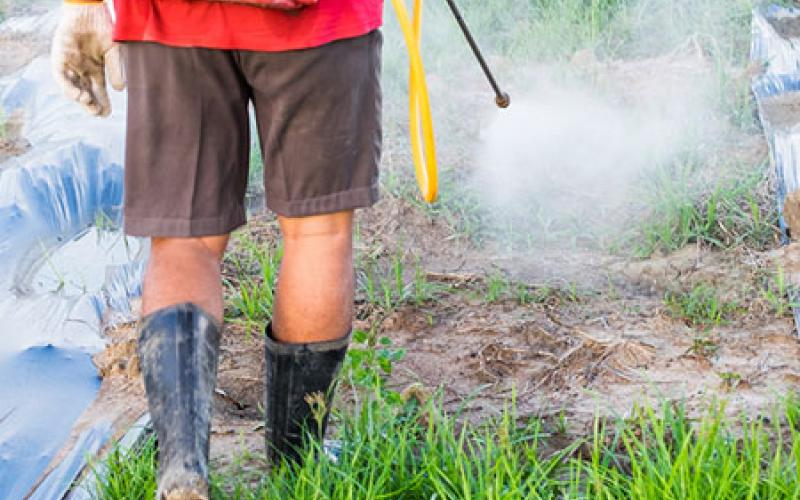A story of global pesticide contamination

A story of global pesticide contamination
For the first time, a meta-study shows risks of insecticide exposure to surface waters — even in countries with stricter environmental regulation.
Original Paper:
Stehle, S., Schulz, R. 2015. Agricultural insecticides threaten surface waters at the global scale. (2015) DOI: DOI: http://dx.doi.org/10.1073/pnas.1500232112
A recent meta-study on pesticides, a class of products that has seen a 750-percent increase in production between 1955 and 2000, highlights for the first time that surface waters may be at risk from pesticide exposure on a global scale. Although a necessary activity for human survival, agriculture is now commonly understood as one of the main drivers of land transformation and degradation. Pastures and crops, susceptible to pests, are routinely sprayed with large amounts of pesticides, including insecticides. While the impacts of agriculture on nutrient pollution and habitat are well studied, the authors argue that agricultural impacts on aquatic biodiversity from toxic insecticide runoff are underestimated.
The analysis shows that roughly 41 percent of the insecticide concentrations measured in surfaces water, and a staggering 83 percent of the insecticide concentrations measured in sediment, exceed regulatory thresholds and result in decreasing aquatic biodiversity. A statistical analysis reveals that concentrations are particularly high for newer generation of insecticides like pyrethroids, a class of popular household insecticides. Further, there is no monitoring or scientific investigation of pesticide contamination for 90 percent of the global cropland. The lack of monitoring seems particularly acute in crops-rich Russia and former soviet states, and on large swathes of the South American and African continents. Extrapolating results from monitored to unmonitored waters, the scientists estimate that 65 percent of global cultivated areas are at risk for exposure to insecticide. Overwhelmingly, the entry pathway is shown to be edge-of-field runoff: contaminated water draining from agricultural lands into neighboring streams.
The researchers highlight that the study suffers from a number of limitations, including challenges in measurements. For instance, peak concentrations, mixture toxicity, and repetitive exposure could all act to increase the actual — versus measured — risk to aquatic species. On the other hand, they emphasize that exceeding the regulatory thresholds does not necessarily mean that a great risk to aquatic species exist as local circumstances may mitigate such risks. Nevertheless, they conclude that the overall biological integrity of water bodies is threatened because insecticide exposure is widespread, and declines in biodiversity can be detected.
Of particular relevance to policy makers, the study underscores the inadequacy of current regulatory frameworks, as even countries with more stringent environmental regulations in place exceeded regulatory thresholds. Particularly, the authors contend that there is a failure of research and development efforts to develop more environmentally friendly insecticides. The long-term nature of organic pollution in sediment adds a layer of complexity to the pollution problem, but the core conclusion remains: increasingly stringent regulation stalled the increase of exposure for older generation pesticides (organochlorines and organophosphates), but the use of newer-generation pesticides has worsened the contamination. This finding illustrates that a new approach is needed to control pesticides, one that tackles both the toxicity of compounds, and the entry pathways. Protecting aquatic species and biological integrity will not only require enhanced regulatory mechanisms and monitoring, but also improvements in agricultural practices.




